The article highlights how crucial ABA data sheets are for tracking your child's progress in therapy. These sheets aren't just paperwork; they play an essential role in crafting personalized treatment plans and ensuring effective interventions. By collecting data systematically, therapists can spot behavior patterns, set clear goals, and adjust strategies as needed. This approach ultimately leads to better outcomes for children receiving ABA therapy.
Think about it—when you have a clear picture of your child's journey, it makes navigating therapy so much easier. Imagine being able to see those small victories and understand how different strategies work for your child! That’s what ABA data sheets offer. They empower both parents and therapists to work together, fostering a supportive environment where your child can thrive.
So, let's explore this together! Understanding the importance of these tools can make a significant difference in your child's therapy experience. Remember, we're here to help you every step of the way!
Understanding a child's progress in ABA therapy is all about careful data collection. It’s a practice that often flies under the radar, yet it has a profound impact on how we can help our little ones thrive. Essential ABA data sheets play a crucial role here; they not only shine a light on behavioral patterns but also empower parents and therapists to work together in crafting personalized treatment plans.
But here's the question: how can families and clinicians make sure these data sheets are used to their fullest potential? It’s all about driving meaningful change! By exploring the pivotal role of these tools, we can uncover the transformative power of data-driven strategies in enhancing a child's developmental journey. Let’s explore this together and see how we can make a difference!
At Rori Care, we believe that gathering information from ABA data sheets is key to effective ABA therapy. We take the time to collect detailed ABA data sheets that document a young person's actions, triggers, and how they respond to different interventions. This systematic approach allows our skilled clinicians to craft individualized treatment plans based on ABA data sheets that truly reflect each child's unique needs, strengths, challenges, and goals.
This personalized method, combined with our compassionate support, ensures that therapy is not only effective but also adaptable as behaviors evolve over time. We also set clear, measurable goals for behavior change and skill development, utilizing ABA data sheets to give everyone a transparent way to track progress.
Our evidence-based strategies, rooted in the latest research, further boost the effectiveness of our interventions. Plus, we continuously evaluate and adjust our plans as needed. We encourage parents to get involved in the information-gathering process. This partnership is invaluable, helping you support your child's behavioral goals more effectively. Let’s explore this journey together!
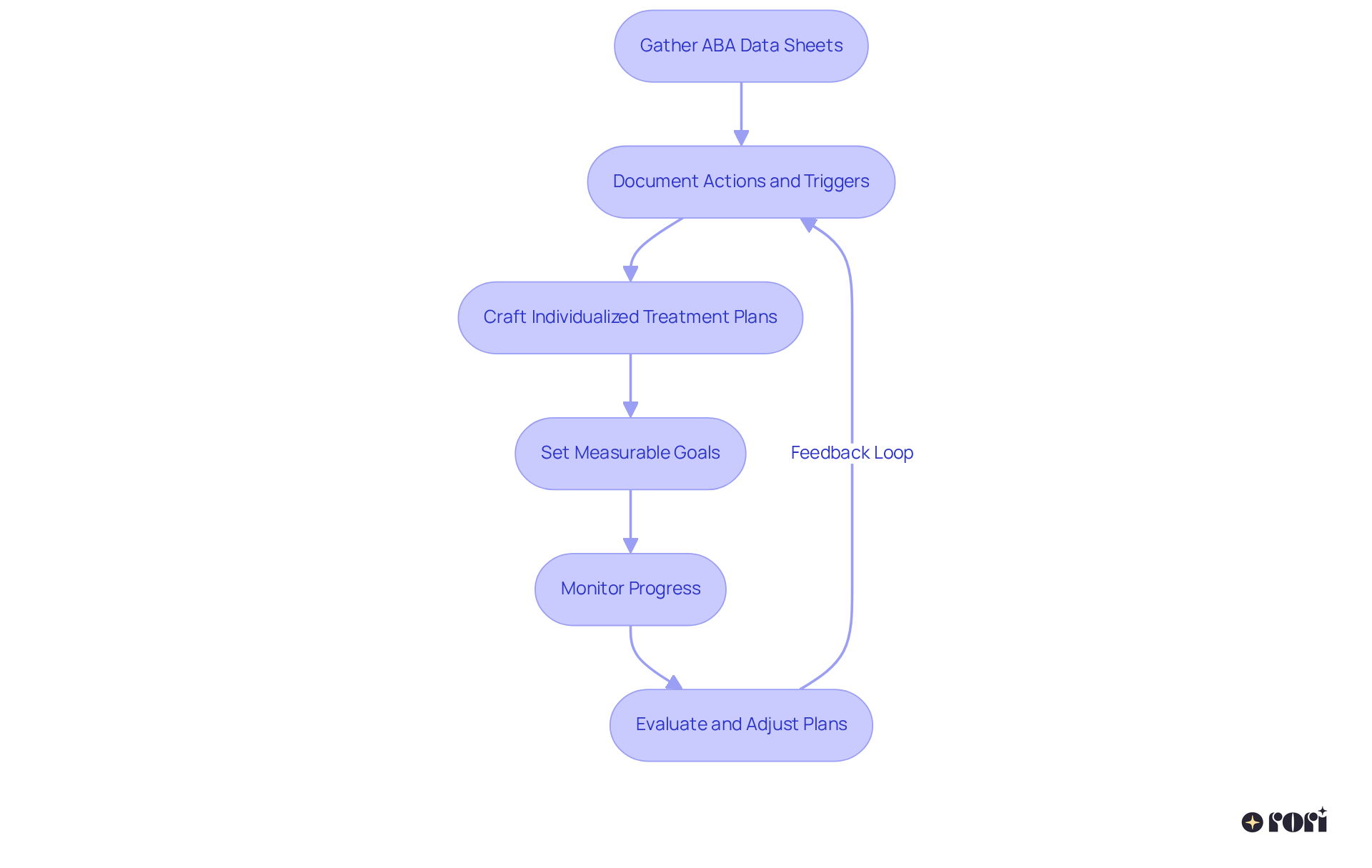
ABA data sheets are essential tools in ABA therapy, helping to document the Antecedent, Behavior, and Consequence of specific actions. This organized approach allows therapists to spot patterns and triggers linked to behaviors. For instance, by regularly noting information during challenging moments, therapists can identify environmental factors that influence a young person's behavior, paving the way for focused interventions.
With Rori Care’s automatic information gathering, our clinical team is always there for your child, without the interruptions of gathering data or writing report notes. This seamless integration lets caregivers focus on what truly matters—supporting their child—while ensuring that all information is securely stored, anonymized, and deleted after analysis to maintain confidentiality and integrity.
Research shows that organized information gathering boosts the accuracy of behavioral analysis, allowing for quick adjustments to treatment strategies. The insights gained from aba data sheets empower clinicians to implement effective strategies that lead to meaningful behavioral improvements. As behavior analysts highlight, understanding the nuances of behavior patterns through aba data sheets is vital for crafting individualized interventions that resonate with each child's unique needs.
It's crucial to educate everyone involved in information gathering to uphold accuracy and reliability. Plus, quality control measures, like supervisor evaluations of record sheets, enhance precision and minimize errors. Ultimately, incorporating aba data sheets into daily practice not only aids in effective behavior modification but also promotes a collaborative environment where families and therapists work together for significant change. Let’s explore this journey together!
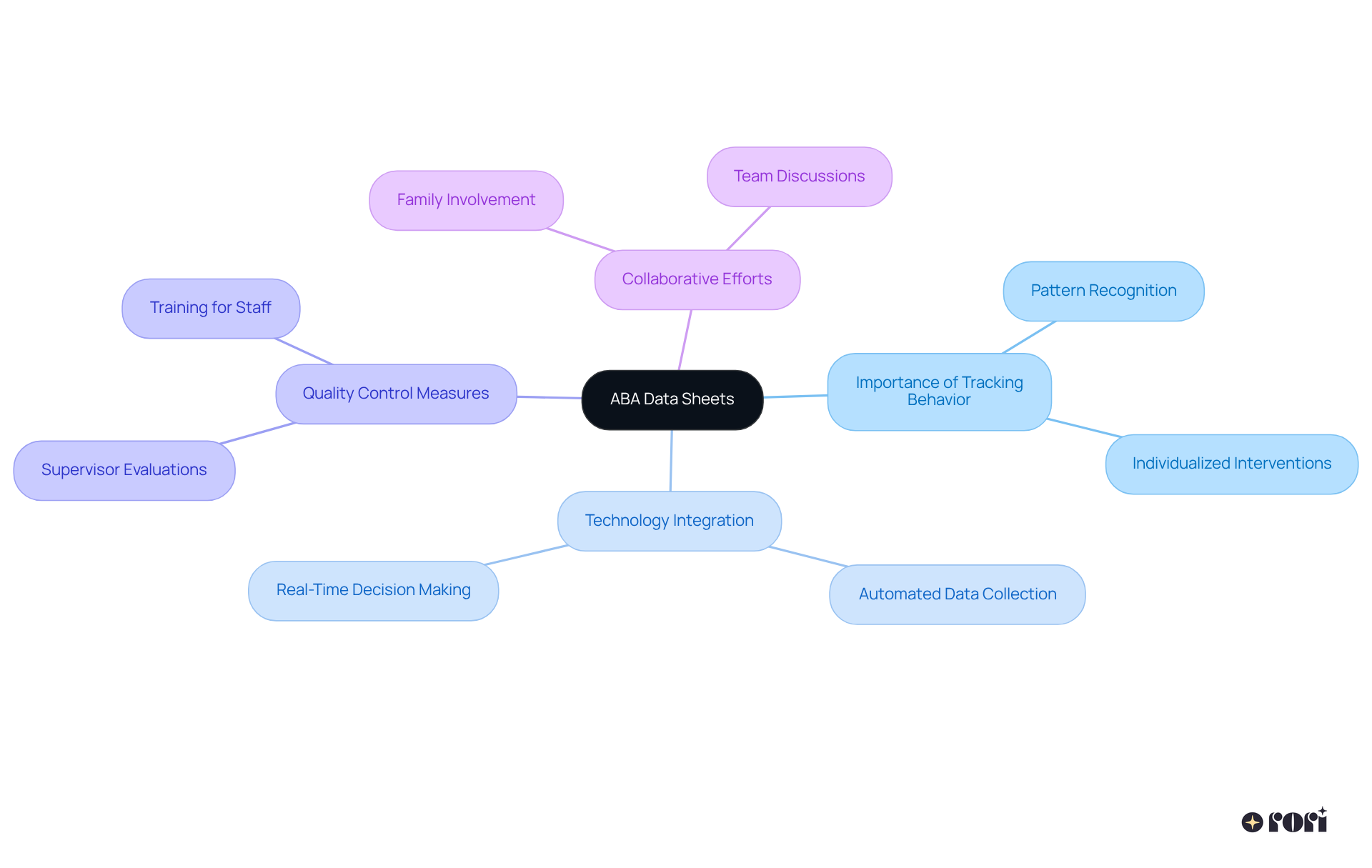
Frequency record sheets are super important for keeping track of how often certain actions happen over time. By diligently monitoring these occurrences, therapists can spot trends and patterns that show how effective different interventions are. This information not only helps in assessing progress but also allows clinicians to make informed tweaks to treatment plans, ensuring they meet the unique needs of each young patient.
With Rori Care’s care engine, treatment plans are continuously improved based on progress reports, creating adaptive strategies that reflect each child's growth. Frequency recording works especially well for specific actions, like asking for help or social interactions, making it easy to measure things clearly and objectively.
Common time intervals for checking behavior in frequency recording are typically 10, 15, or 30 minutes, which helps gather consistent information. As therapists look at this data, they can figure out which strategies are working and which might need a little adjustment, ultimately boosting the overall effectiveness of ABA therapy.
Plus, with cutting-edge AI technology, progress report generation is automated, freeing up 50% more time for direct child treatment. This means more focused and personalized care! By using aba data sheets, parents and therapists can collaborate to track progress, fostering a more responsive and individualized approach to care.
As Katherine Jester, a BCBA, points out, "When we discuss frequency in analysis, we're essentially referring to a simple count of an action." This highlights just how straightforward yet powerful this method can be. Let’s explore this together!
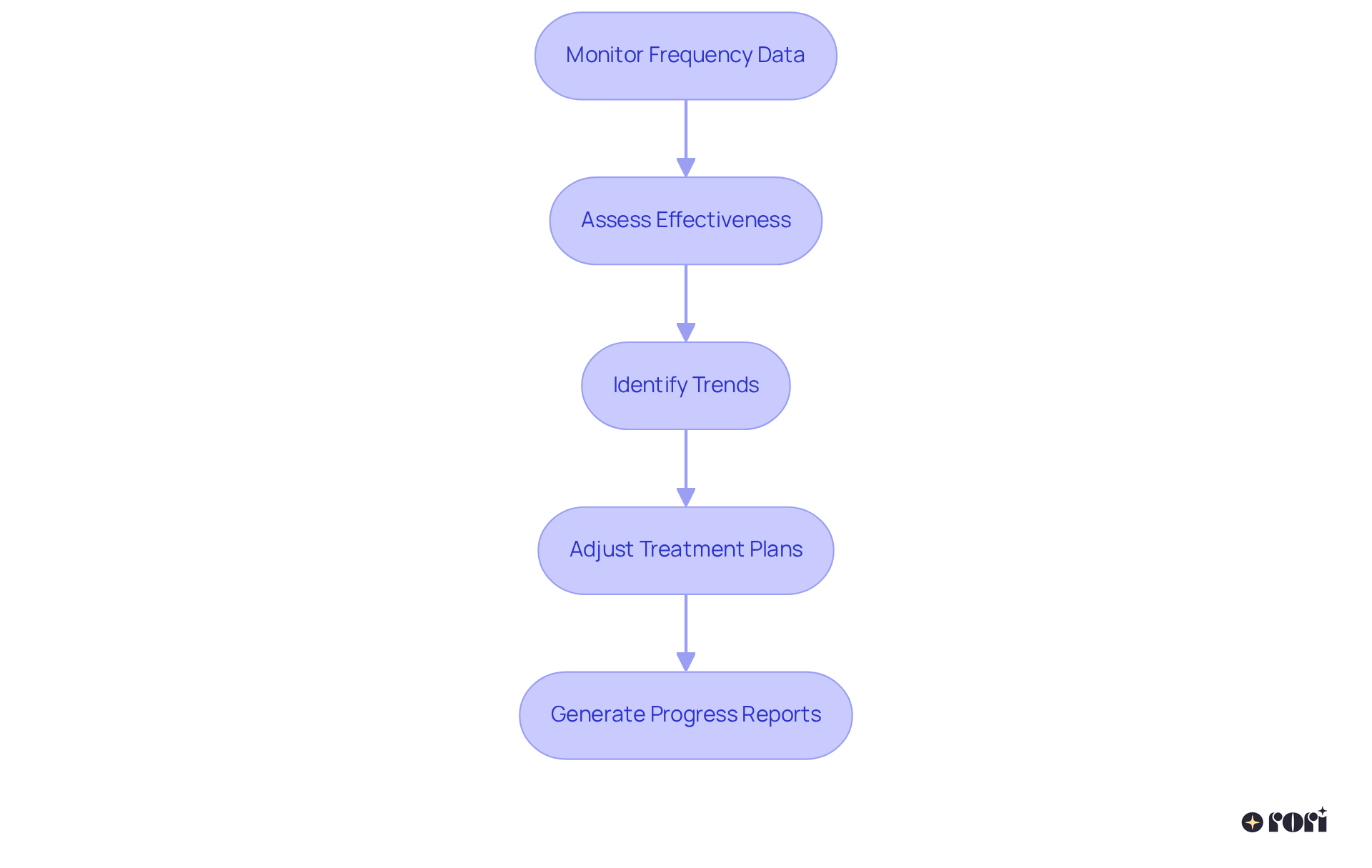
Behavior Intervention Plans (BIPs) are essential tools for managing challenging behaviors in individuals with autism. These formal documents are carefully designed to meet each person's unique needs by using ABA data sheets and data collected through methods like ABC (Antecedent-Behavior-Consequence) analysis. Research shows that customized BIPs can significantly improve intervention outcomes. In fact, kids who receive tailored strategies often see remarkable improvements in their behavior and communication skills.
For instance, many young people involved in structured interventions based on BIPs experience a notable drop in challenging behaviors—some even report up to a 70% reduction in incidents just a few months after starting! This success stems from the personalized nature of BIPs, allowing therapists to focus on specific behavioral goals that fit each individual’s strengths and challenges.
Ongoing research highlights the need for continuous monitoring of ABA data sheets to refine these plans. By regularly checking progress, therapists can tweak strategies to keep them effective and relevant. Board-Certified Behavior Analysts (BCBAs) emphasize that personalizing interventions is key to achieving meaningful results. They remind us that "adapting strategies to the individual not only encourages involvement but also enhances the potential for positive change."
In summary, BIPs are more than just documents; they are flexible resources, such as ABA data sheets, that empower therapists and families to implement effective, data-driven strategies that promote positive behavior changes and support the overall development of individuals with autism. Plus, did you know that 50-75% of young individuals undergoing intensive ABA treatment for two or more years show significant cognitive improvements? This really underscores the lasting benefits of these customized interventions. If you're curious, Rori Care offers a free consultation to discuss how BIPs can be tailored to your child's needs. Let’s explore this together!
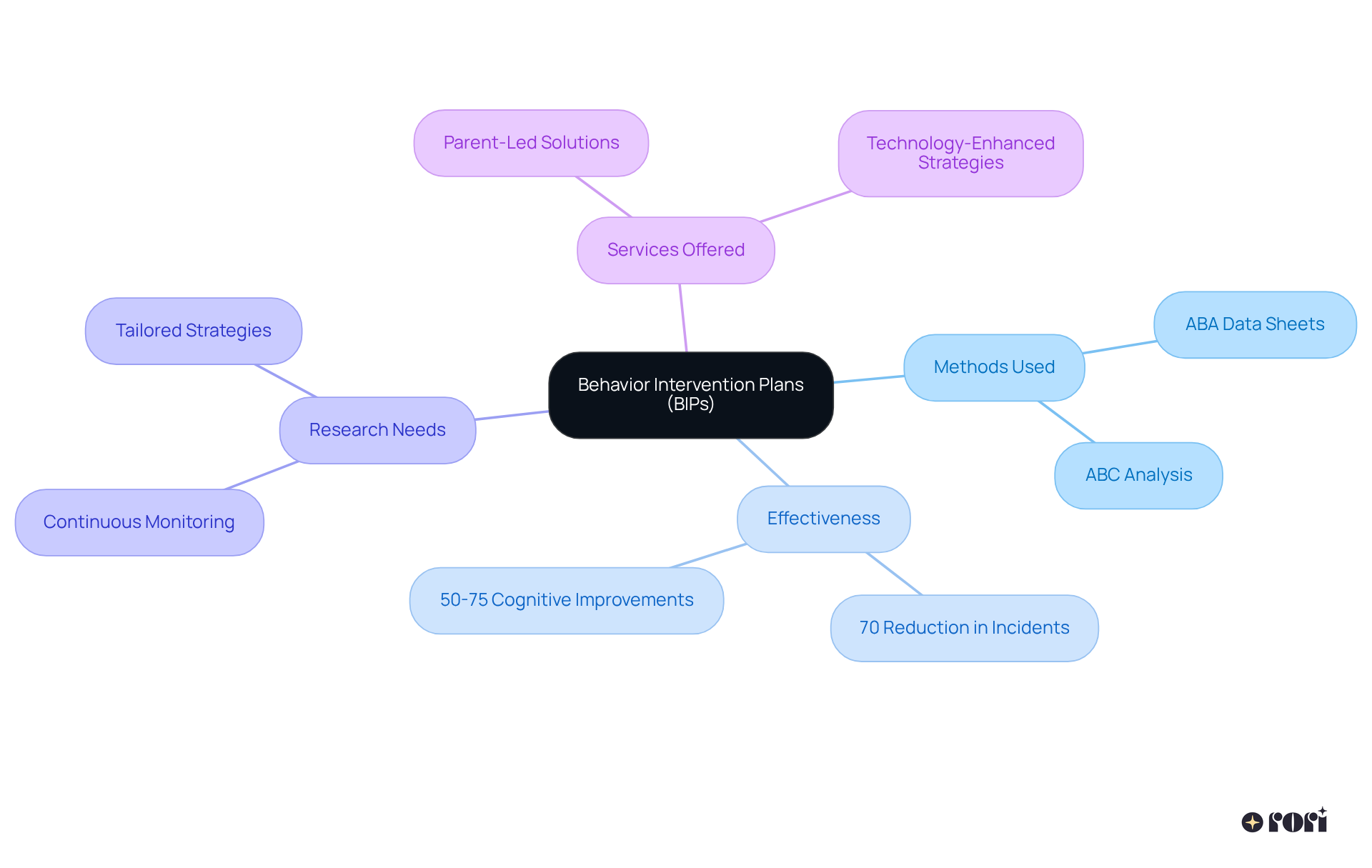
In ABA therapy, a variety of methods including aba data sheets are used to help us truly understand a young person's actions. Techniques like direct observation, frequency counts, and anecdotal records each offer unique insights, allowing therapists to capture a well-rounded view of the child's development. For instance, direct observation lets clinicians see actions unfold in real-time, while frequency counts track how often certain behaviors occur, giving us valuable metrics for monitoring progress. Anecdotal records add depth by providing context and stories around actions, which can be crucial for understanding triggers and patterns.
By combining these methods, clinicians can address all aspects of a young person's behavior, leading to more personalized and effective interventions. This multifaceted approach not only sharpens the accuracy of our information but also encourages collaboration between therapists and parents. When insights are shared, they can guide treatment adjustments, making the process smoother for everyone involved. Plus, at Rori Care, we gather information automatically during clinical sessions, ensuring that our team is always available for your child without interrupting the flow of therapy. Rest assured, all information is securely stored, anonymized, and deleted after analysis, reinforcing our commitment to confidentiality and trust in the therapeutic journey.
As Ruben Kesherim notes, "By utilizing these methods, therapists can gain a comprehensive understanding of behaviors, identify patterns, and make data-driven decisions to support individuals with autism effectively." Efficient information gathering in ABA data sheets is truly a team effort between therapists and parents, emphasizing the importance of collaboration to achieve the best outcomes for our youngsters. Consistent access to updated information and visual tools can greatly enhance parents' understanding of their child's therapy results, ultimately fostering their development and independence in their therapeutic journey. Let’s explore this together!

Graphing ABA data sheets is a powerful method to visualize progress and identify behavioral trends over time! By plotting data points on graphs, therapists can easily see patterns in behavior—like improvements or regressions. This visual approach not only helps assess how effective interventions are but also enhances communication with parents and stakeholders regarding ABA data sheets, creating a more cooperative treatment environment.
With the exciting integration of AI-driven progress report automation, therapists can whip up reports more efficiently, freeing up 50% more time for direct child treatment. For example, when positive reinforcements increase from 13 to 49, compliance with requests often rises too, showing just how impactful specific strategies can be. Recent studies really highlight how important visual aids, including ABA data sheets, are in autism treatment, revealing that effective monitoring through graphs can lead to quick adjustments in care plans.
Real-life examples show how therapists use scatterplots, line graphs, and bar charts in ABA data sheets to monitor behavior trends, which aids in making informed decisions. As Steven Zauderer beautifully put it, 'Visual representation of information is essential in shaping effective ABA interventions.' This really emphasizes the importance of visuals in enhancing treatment results.
By integrating these visual tools with individualized planning and measurable goals, therapists can ensure that interventions stay responsive to each child's changing needs. This ultimately boosts the overall effectiveness of ABA therapy. Let’s explore this together and see how we can make a difference!
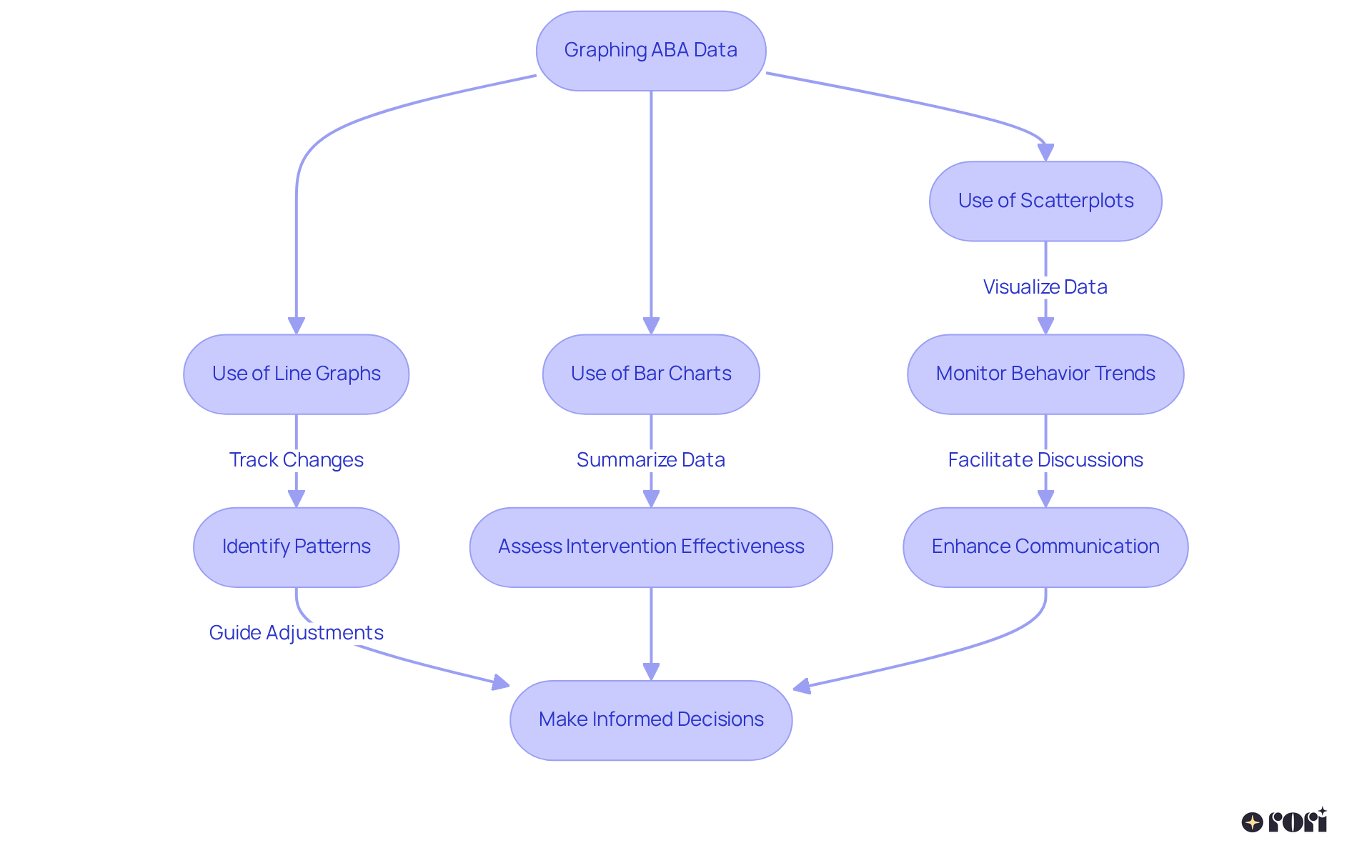
Digital tools for collecting ABA data sheets really simplify the process! They allow therapists to record and analyze data more efficiently. With specialized apps and software designed just for ABA professionals, ABA data sheets simplify data entry, automate calculations, and offer instant visual progress updates. 📊
By using these technologies, clinicians can achieve up to 40% greater accuracy in behavioral measurements compared to traditional methods. This boost in precision is fantastic—it not only helps in making better-informed treatment decisions but also leads to improved outcomes for children. Isn’t that what we all want?
Plus, organizations that have embraced well-integrated digital systems report a 25% reduction in administrative time. This means therapists can spend more time focusing on what truly matters: direct client services. So, incorporating technology in ABA practices isn’t just a passing trend; it’s an essential step forward that enhances the effectiveness of interventions. Let’s explore this together and see how these advancements can make a difference!
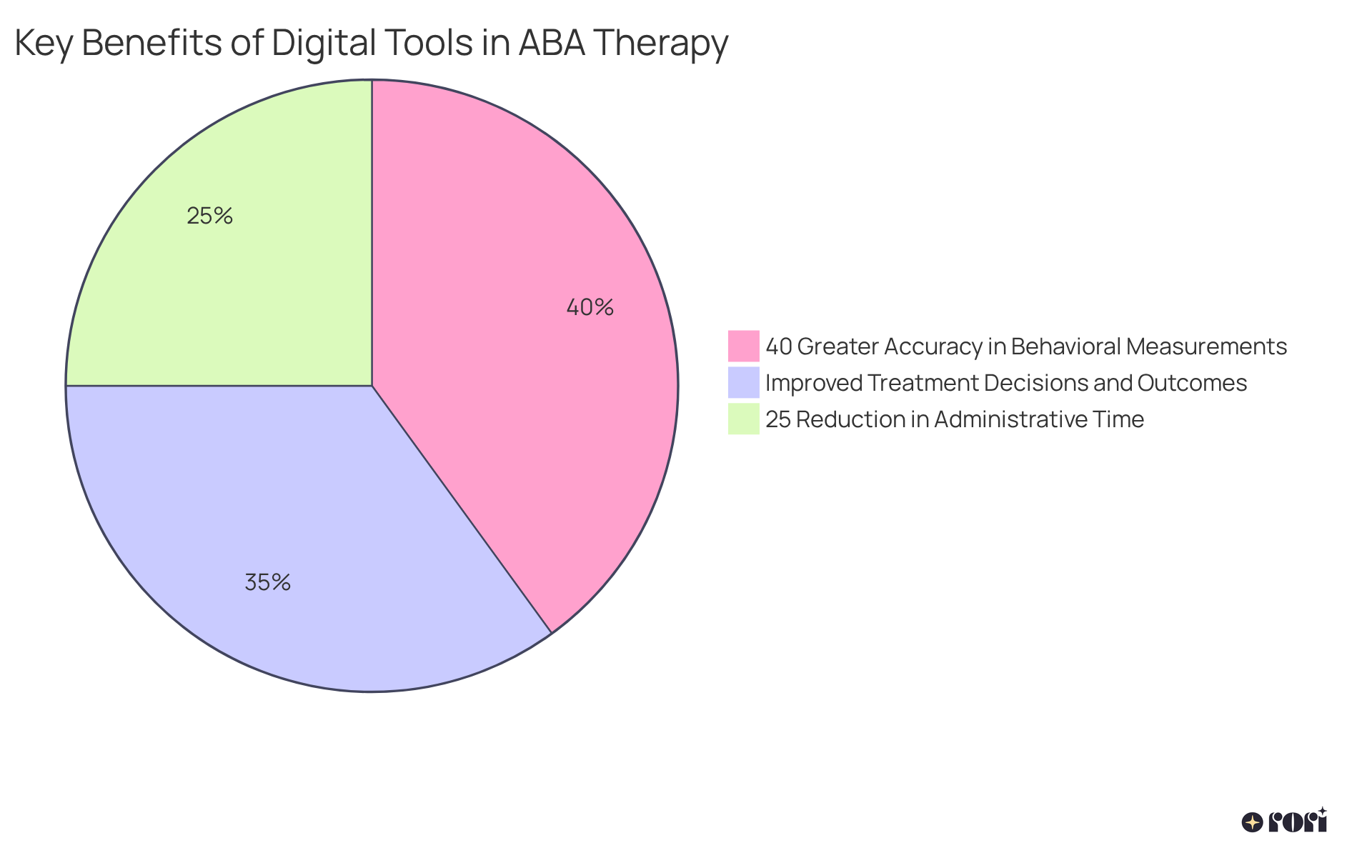
As a parent, gathering information is crucial for ensuring that ABA data sheets help make therapy work its best! When parents learn to monitor their child's actions, they become key players in the therapeutic journey. This active involvement not only helps keep strategies consistent at home but also provides valuable insights from ABA data sheets that can shape personalized treatment plans.
Research shows that kids whose parents are involved in gathering information see real improvements in communication, social skills, and emotional regulation. For example, one study found that parent-led interventions significantly reduced challenging behaviors like tantrums and aggression. This really highlights how family involvement can make a difference!
Plus, parents who are trained in the strategies outlined in ABA data sheets often feel more confident, which leads to better treatment adherence and outcomes. As Ruben Kesherim said, "By actively engaging in information gathering and reviewing ABA data sheets, parents can assist in recognizing patterns, triggers, and areas for enhancement that may not be apparent solely through therapy sessions." This aligns perfectly with findings that show active caregiver involvement leads to better behavioral outcomes, empowering families to support their child's growth effectively.
The care engine uses the information collected to continually adjust intervention strategies, ensuring that treatment remains adaptable to your child's evolving needs. To get started, parents can keep simple ABA data sheets to record specific behaviors and share their observations with their child's therapist. This not only enhances their ability to make informed decisions but also supports their child's development. Let’s explore this together!
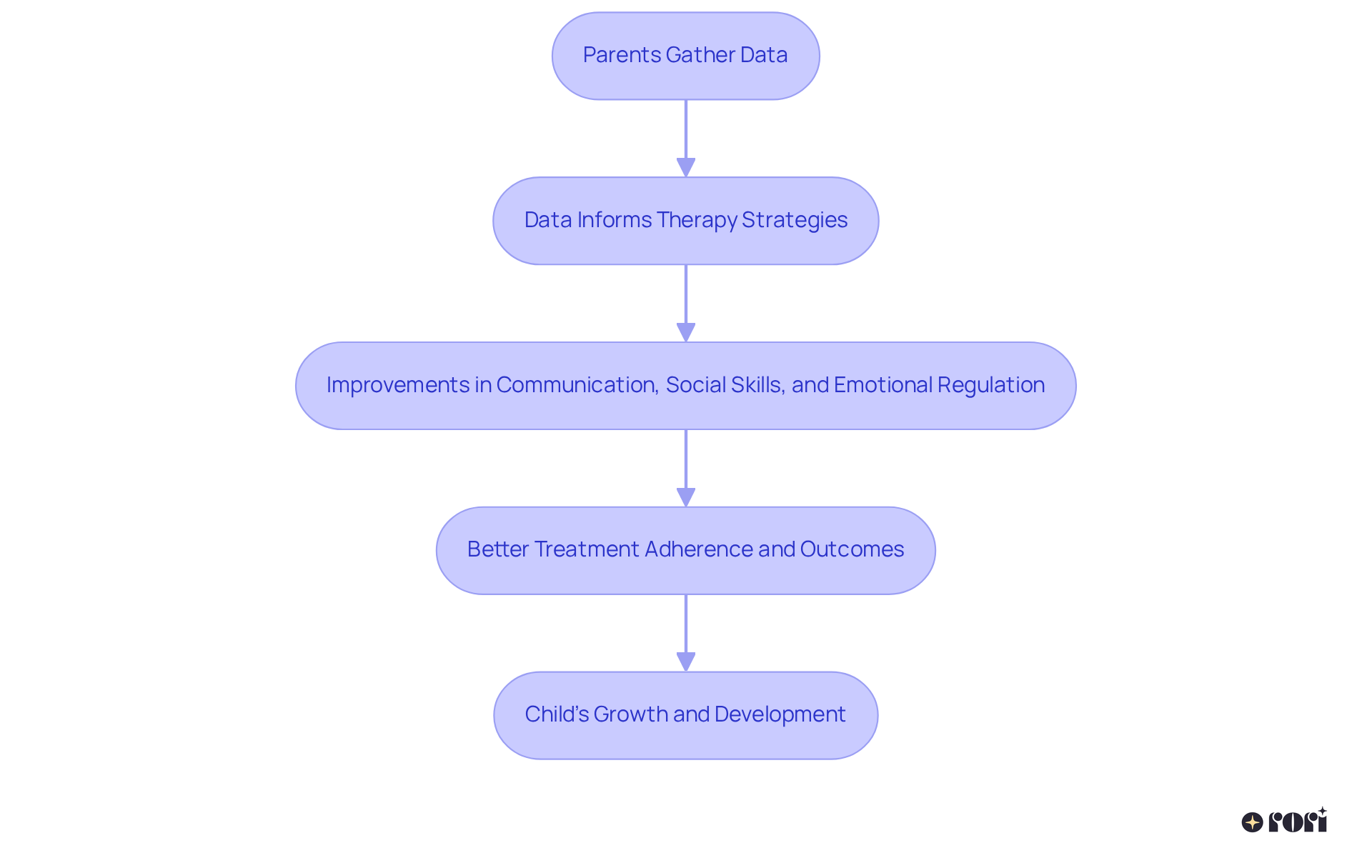
Examining ABC data is so important for understanding the actions of individuals with autism. By taking a closer look at the Antecedents, Behaviors, and Consequences, therapists can uncover patterns and triggers that really influence a young person's actions. This method not only shines a light on the immediate factors leading to specific behaviors but also reveals the underlying motivations that might not be obvious at first. For instance, if we understand that a child tends to act out when faced with certain demands, it can help us create tailored interventions that directly address those triggers.
Recent findings really highlight how effective this approach can be, showing that precise ABC information gathering often leads to better treatment outcomes. Analysts point out that the ABC model, as outlined in ABA data sheets, is a cornerstone of Applied Behavior Analysis (ABA) therapy, offering deep insights into why actions occur and how we can modify them effectively. By consistently gathering data to identify conduct patterns, practitioners can develop strategies that not only reduce challenging actions but also promote positive changes in behavior. This aligns perfectly with the benefits of program development, including adaptive strategies that respond to each individual's evolving needs.
Real-life examples show just how powerful ABC analysis can be in practice. For example, consider a young person who frequently displays disruptive behavior during group activities. They might benefit from interventions that change the antecedents, like adjusting the activity's structure or providing extra support. This targeted approach helps us better understand the child's needs and enhances their overall progress.
Current trends in behavior analysis emphasize the importance of collaboration between caregivers and therapists in identifying behavior patterns. By sharing insights and observations, families can provide valuable context that enriches the information gathered, leading to more effective interventions. This collaboration empowers caregivers, allowing them to take an active role in the planning and evaluation process. Ultimately, mastering ABC analysis gives both parents and professionals the tools they need to support children in reaching their developmental goals. To make the most of ABC information gathering, parents are encouraged to jot down details promptly after a behavior occurs, ensuring that the information is precise and reliable. Let’s explore this together!
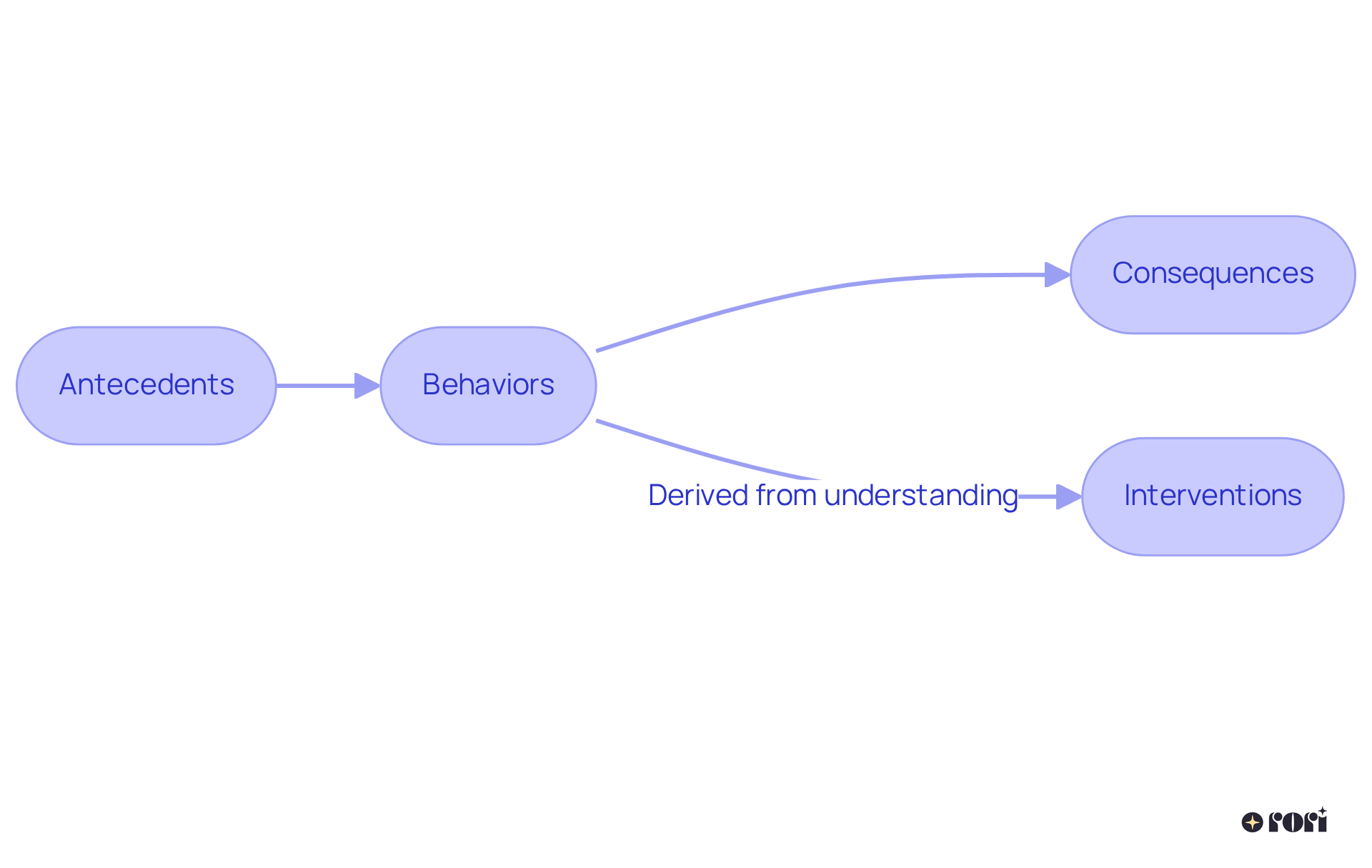
Case studies utilizing ABA data sheets reveal some truly inspiring success stories that showcase the power of data-driven approaches! For instance, one family shared how their son, diagnosed with autism at just two years old, began to show remarkable improvement after only six months of intensive ABA intervention. And this isn't just a one-off; studies indicate that around 90% of young individuals involved in intensive ABA programs see noticeable enhancements in their communication and social skills.
Clinicians emphasize that systematic data gathering and analysis of ABA data sheets—taking up about 50% of ABA treatment time dedicated to writing reports—are crucial for tailoring interventions to meet each child’s unique needs. One clinician mentioned, 'The integration of data-driven methods allows us to track progress accurately and adjust strategies in real-time, leading to significant behavioral improvements.' Another heartwarming story features a three-year-old girl who, after receiving targeted ABA interventions, developed essential communication skills and began responding to her name, demonstrating just how impactful this approach can be.
Recent research backs this up, showing that children who start ABA interventions between the ages of two and six often achieve better outcomes in both communication and behavior. Plus, with our automated information gathering process, our clinical team is consistently available for your little one without missing a beat, creating a more focused therapeutic environment.
These real-life examples truly highlight the transformative power of ABA therapy, particularly when supported by strong data collection methods, such as ABA data sheets and automatic progress report generation. Together, we can pave the way for children to thrive and reach their full potential! Let’s explore this journey together!
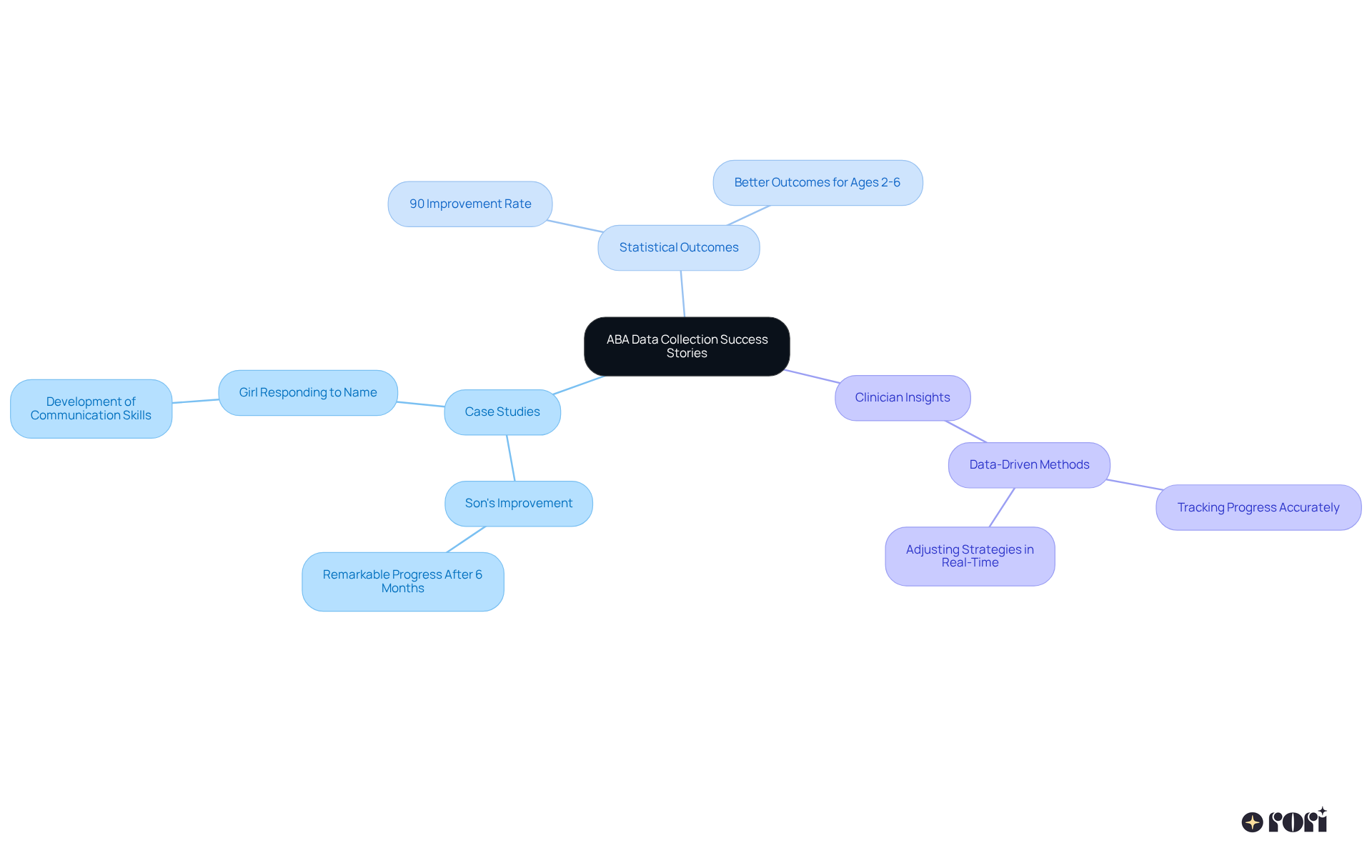
The importance of ABA data sheets in tracking a child's progress truly cannot be overstated! These essential tools form the backbone of effective ABA therapy, helping clinicians gather vital information that shapes individualized treatment plans. By using various data collection methods—like ABC analysis, frequency recording, and behavior intervention plans—therapists can craft tailored strategies that meet each child's unique needs, promoting meaningful behavioral change.
Throughout this article, we’ve shared key insights about the different approaches to data collection in ABA therapy. From the value of parent involvement to the role of digital tools that make the process smoother, every aspect contributes to a deeper understanding of a child's behavior. Plus, integrating technology not only boosts accuracy but also allows for quicker adjustments to treatment plans, ensuring that interventions stay effective as children grow and develop.
Ultimately, the journey of ABA therapy is a collaborative effort between therapists and families, with data collection playing a crucial role in driving success. By actively engaging in this process, parents can empower themselves and their children, leading to improved communication, social skills, and overall development. Embracing these strategies and tools will pave the way for transformative outcomes, reinforcing the belief that with the right support and accurate data, every child has the potential to thrive. Let’s explore this journey together!
What is the importance of ABA data sheets in therapy at Rori Care?
ABA data sheets are crucial for effective ABA therapy as they document a young person's actions, triggers, and responses to interventions. This information helps clinicians create individualized treatment plans that reflect each child's unique needs, strengths, challenges, and goals.
How does Rori Care ensure the therapy is adaptable over time?
Rori Care's personalized method includes continuously evaluating and adjusting treatment plans based on the evolving behaviors of children. This adaptability is supported by the detailed information collected through ABA data sheets.
What role do parents play in the information-gathering process at Rori Care?
Parents are encouraged to get involved in the information-gathering process, which is invaluable for supporting their child's behavioral goals more effectively. This partnership enhances the overall therapy experience.
What are ABC data sheets and how are they used?
ABC data sheets document the Antecedent, Behavior, and Consequence of specific actions, allowing therapists to identify patterns and triggers linked to behaviors. This organized approach aids in focused interventions and improves the accuracy of behavioral analysis.
How does Rori Care maintain confidentiality during data collection?
All information collected is securely stored, anonymized, and deleted after analysis to ensure confidentiality and integrity.
What is the purpose of frequency data sheets in therapy?
Frequency data sheets track how often certain actions occur over time, helping therapists identify trends and assess the effectiveness of different interventions. This information allows for informed adjustments to treatment plans.
How does Rori Care utilize technology in their data collection process?
Rori Care employs cutting-edge AI technology to automate progress report generation, which frees up 50% more time for direct child treatment, allowing for more focused and personalized care.
What are common time intervals used in frequency recording?
Common time intervals for checking behavior in frequency recording are typically 10, 15, or 30 minutes, which helps gather consistent and objective information.
How do ABA data sheets foster collaboration between parents and therapists?
ABA data sheets enable parents and therapists to track progress collaboratively, promoting a responsive and individualized approach to care that aligns with the child's development and needs.